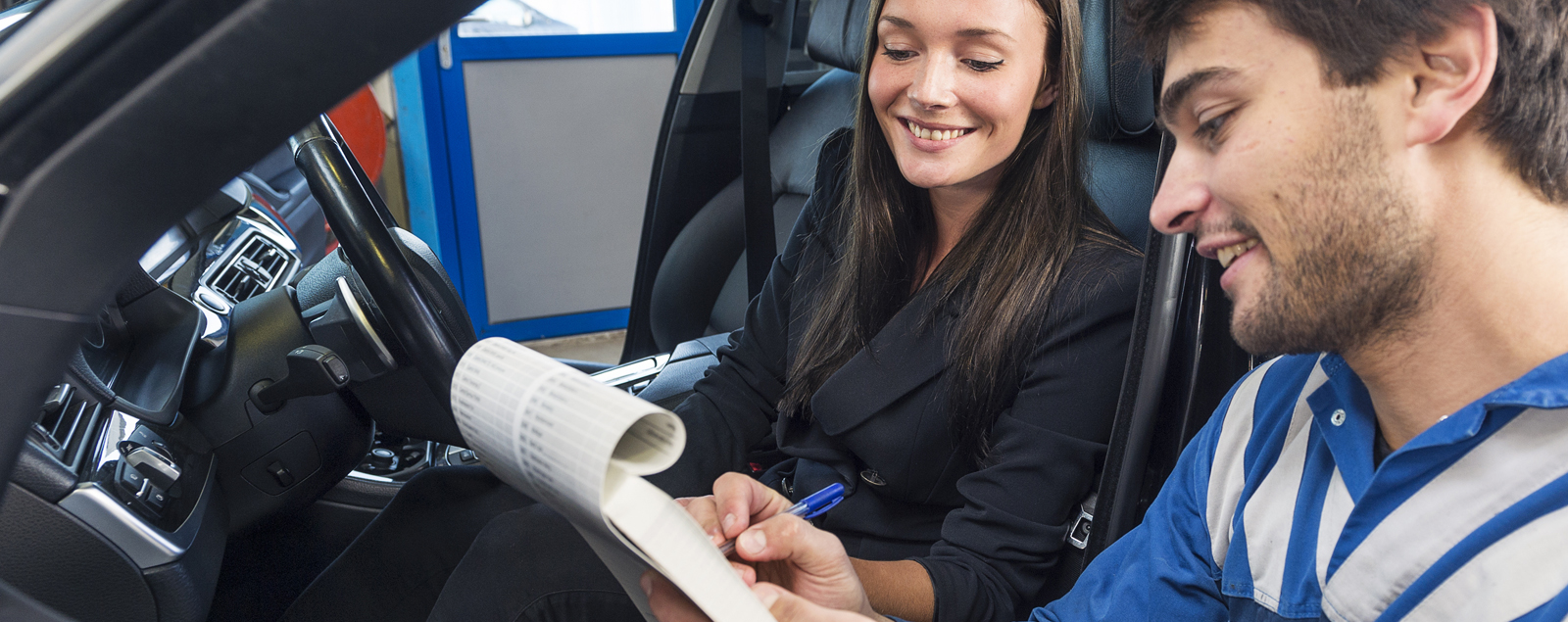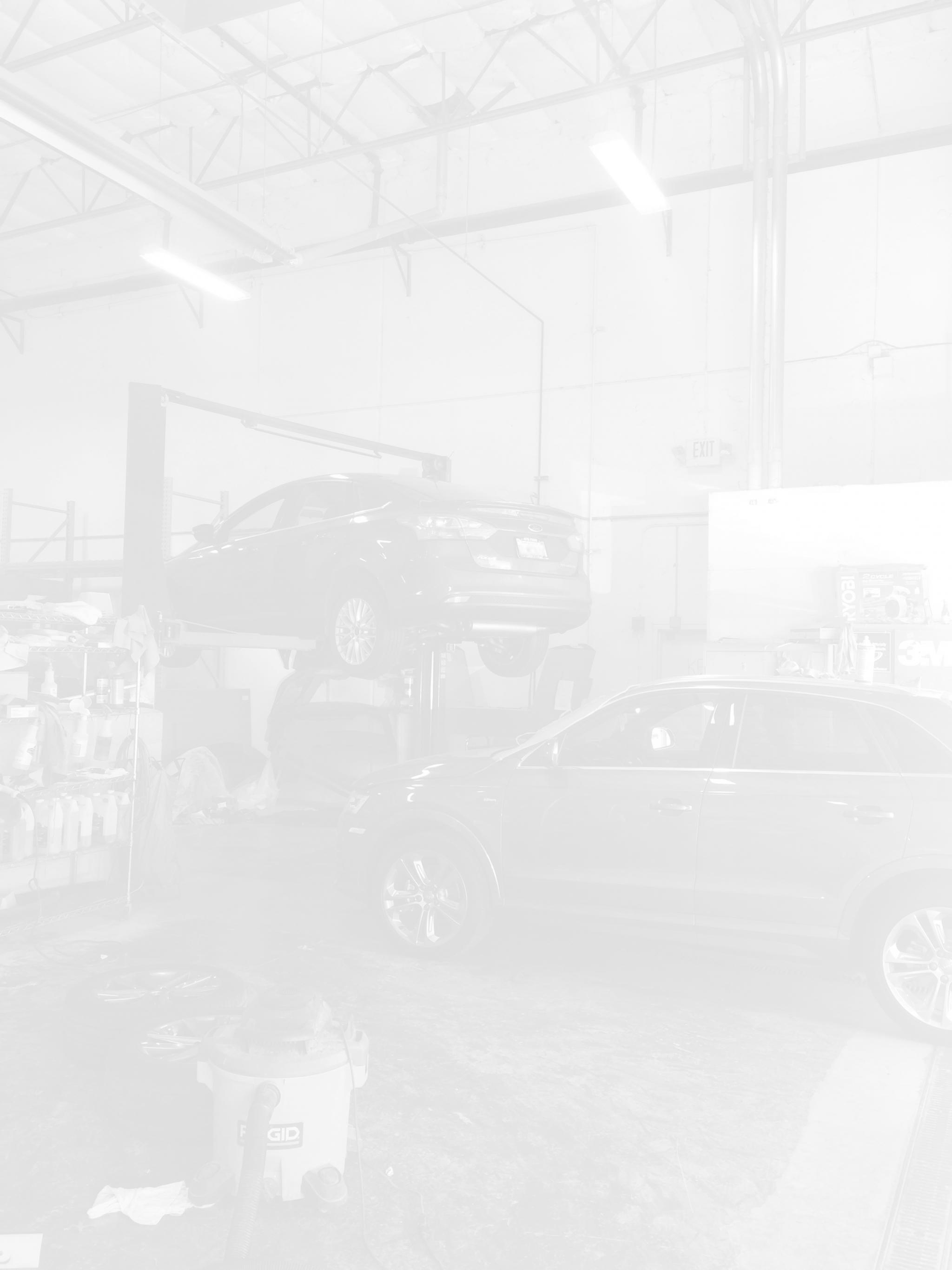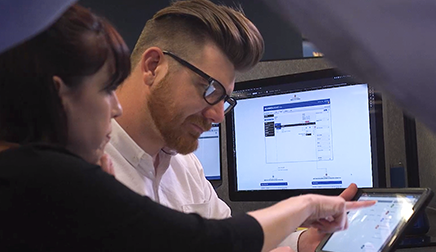
Ask the right questions – customer intake procedures

In a lot of ways, your business is like the cars we work on. There are many complex systems that work together in concert, but if the intake system isn’t operating correctly it causes numerous difficulties. Without proper procedures, you shouldn’t guess at diagnosis or adjustments. Likewise, when running the business side of your shop, “winging-it” is not on the list of “10 Straightforward Ways to Improve Your Small Business.” Much like acquiring OE specifications, you should have an intake procedure.
If your customer intake goes well, everything else seems to operate smoothly. Do this poorly and the whole day can take a severe downturn. For example, a car could come in for a coolant leak but the car was recommended to get new brakes (that it didn’t need right away). The customer’s original complaint was never recorded, the coolant leak was never addressed and the customer relationship was soured. We want to get the information we need from the customer, confirm their wants and needs, and serve those customers properly.
If your customer intake goes well, everything else seems to operate smoothly. Do this poorly and the whole day can take a severe downturn.
Initial Conversation
First contact is critical to an effective customer intake process. No matter the method of conversation, the goal is the same: be careful, respectful, and leave the customer with a positive impression of you and your company. Remember, this initial interaction shouldn’t be treated as an interruption; it is the method by which your business grows.
On the phone:
When taking calls, your body language shows through your voice. They cannot see you, but surprisingly your body language affects your vocal tone. So, smile when you say that partner and adopt a relaxed posture. It does come through the phone – they can tell when you are wound tighter than a dollar store watch. Convey that you will assist the customer any way you can. Being agreeable does help. This is not the time to adopt the IRS motto of “we’re not happy until you’re not happy.” When you are making the call, think about what you want to communicate before you dial. Rehearse a bit and adopt the attitude that what you are about to say to the customer will benefit them.
Answering the phone is a crucial skill for all employees. They don’t care if you are the owner, a tech, or a lot porter. The service they get should be of the same quality. If a customer leaves a message during business hours, ensure that the call is returned in a timely manner; within an hour is ideal; two or three hours later is pushing it.
How about texting?
Many of the same rules that apply to phone calls also apply to texting. Be pleasant but be concise. While you don’t want to write the text equivalent of War and Peace, you’ll also want to avoid texting shorthand. So, watch the spelling, grammar, and the slang. Responses can be short, but should not be abrupt.
Some texting programs allow preset responses. Use caution while using those canned responses. While these save time, they can come across as cold and scripted if care is not exercised.
And for those customers that prefer email, consider the following:
- Email should not be perceived as equivalent to texting. Do not use shorthand or glib responses.
- Spelling and grammar still matter – perhaps more so with email.
- The subject line should include a reference to the customer’s vehicle and the primary issue: Regarding your 2015 Chevy Traverse – coolant leaking overnight
- Think about emails you have received from companies; what did you like and what did you dislike? Those emails can serve as powerful learning tools. (even if you just thought they were spam).
When the customer comes through your door
Everyone who talks to customers should follow a standard customer interview process. The inspection forms found in ALLDATA Repair under Help & Feedback/Shop Operations can help you with questions to ask your customers. You will find Inspection Forms, System Checklists and Customer Questions within the Shop Operations link.
As part of the customer intake process, the customer’s expectations should be determined. Make sure their expectations are reasonable and that they‘re willing to spend the money needed to fix potential problems.
What outcome are they trying to reach? Some customers want the vehicle to be just as good as it was new; other customers just want the bare minimum done even if that “bare minimum” leaves safety issues unfixed. Either situation is a potential red flag. You may be able to modify the customer’s expectations to a more reasonable level. If not, consider that customer may not be a good fit for your shop. There should be a discussion of normal vehicle characteristics and an agreement upon what is fixable and what is not.
What if this car has “made the rounds” of other shops? The customer should be educated on the need for a “clean-sheet” diagnosis, and your initial estimate should reflect the time needed for such an evaluation. If possible, gather the documentation from all previous repairs. Additionally, there may be hidden damages or unsafe prior repairs. Ensure that this possibility is part of your discussions before any of your staff touch the car.
Above all, obtain and document all details of the conversation.
When you and the customer disagree
Detailed documentation should already be a part of your policies and procedures. always take thorough notes. You’ll be glad you did if litigation or a bad Yelp review comes your way. Your shop should have problem resolution steps established and clearly posted in your waiting areas. These steps should agree with your locality’s rules and regulations.
There may be times during the intake procedure where it is clear to you that the customer and your shop are not a good fit. Perhaps you have evaluated the profit potential and found it lacking? The customer may have unreasonable demands revealed by your customer interview process. Or, maybe the car is fundamentally defective from bumper-to-bumper. While no one wants to be perceived as a quitter, there are some pitfalls associated with attempting to hang on too long to a losing proposition. Hanging on too long takes your time away from more profitable customers. Sometimes you need to be willing to fire a customer, no matter how long you’ve known them.
When customer intake is done well…
Proper intake procedures can make a prospective customer into a repeat customer and turn a long-term customer into a source of new customers and positive reviews. When you perform customer intake procedures correctly, the entire workflow will proceed smoother and your business will flourish. Yelp will sing your praises, and who knows, you just may find it easier to make those boat payments.
Want to see how ALLDATA can improve shop efficiency? Check out our suite of products, each designed to contribute to both shop efficiency and productivity.
If you would like to read more articles like this one please subscribe to ALLDATA News.







